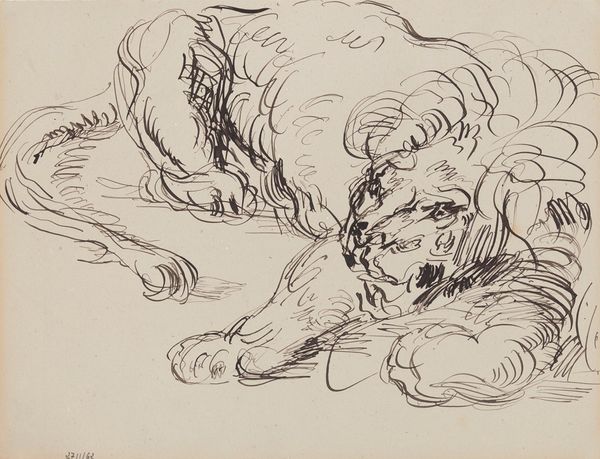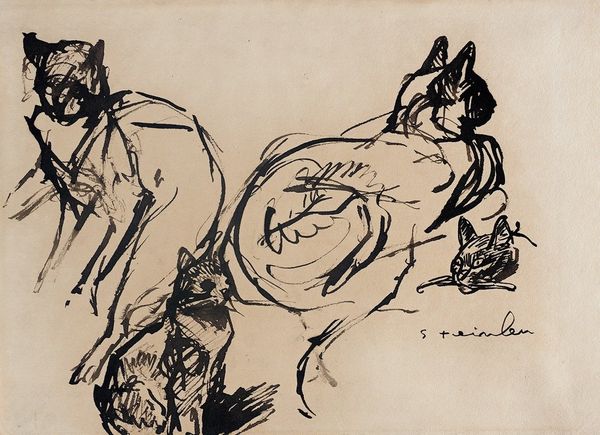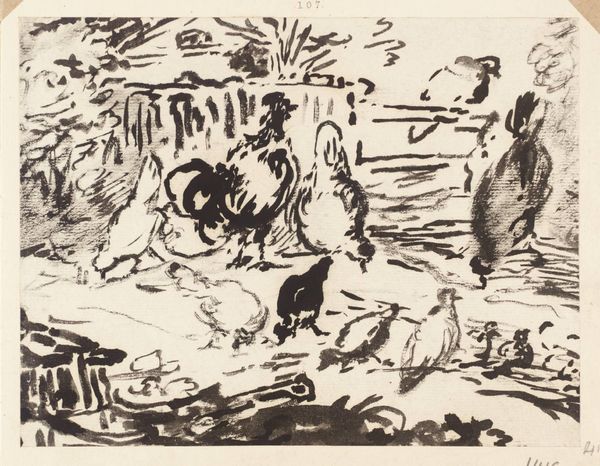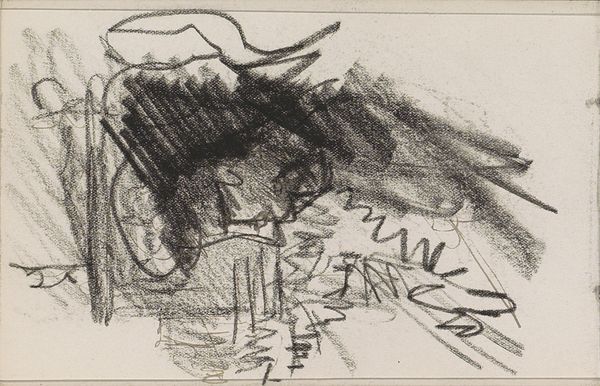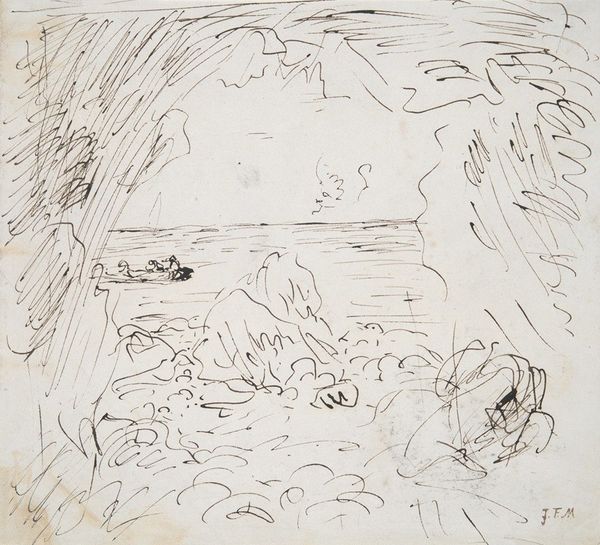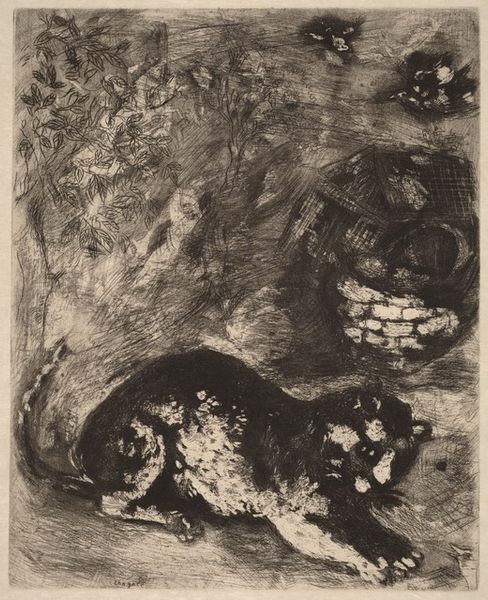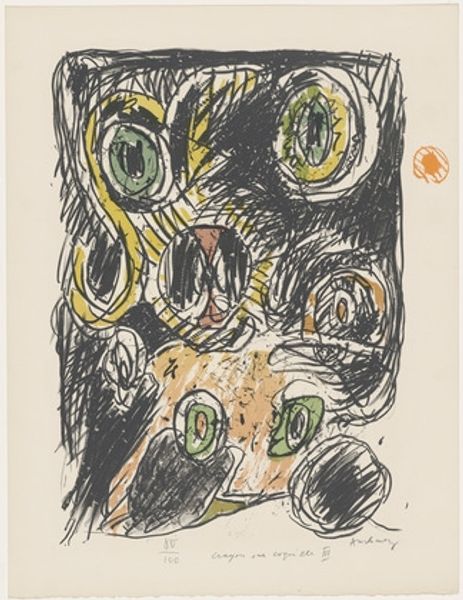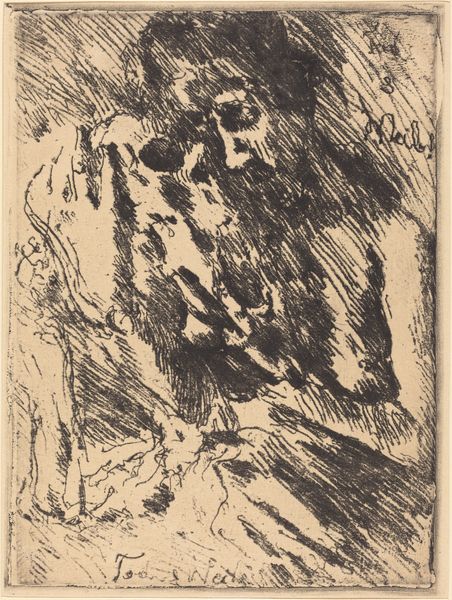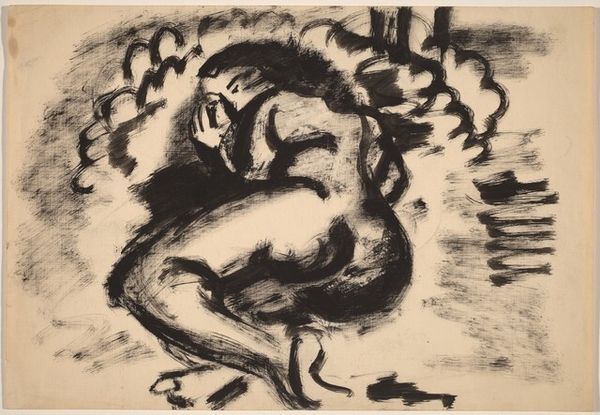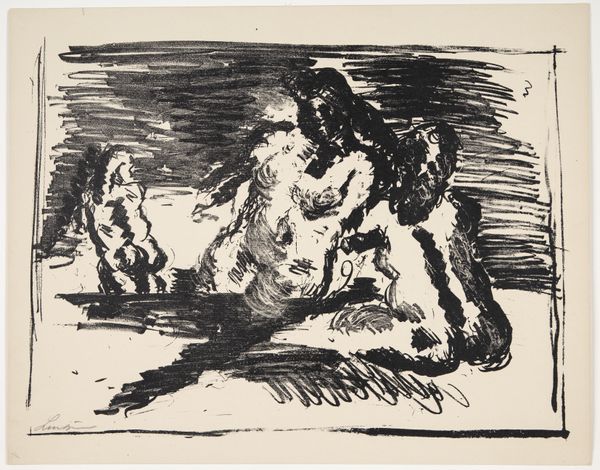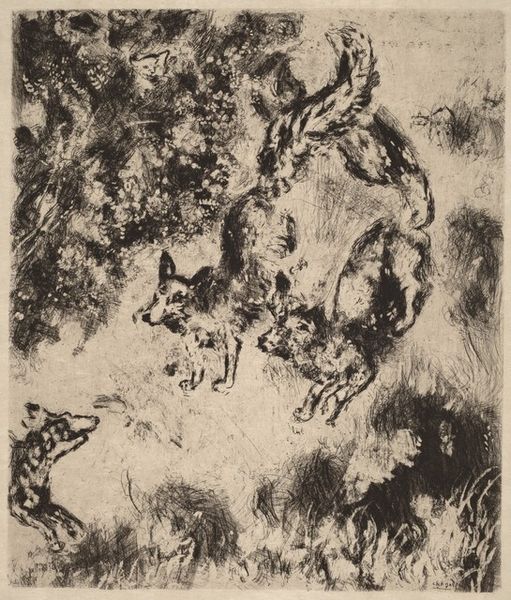
Copyright: Public domain
Curator: Oh, wow. These aren’t your typically bright, vibrant Van Gogh sunflowers, are they? More like sunflowers in a fever dream. Editor: Indeed. This painting, "Two Cut Sunflowers," from 1887, is housed right here at the Van Gogh Museum. He rendered this still life with oil paint, building up layers using the impasto technique. And, like much of his work, it epitomizes post-impressionism and hints at expressionism. But I agree, something feels off here. Curator: Right? I keep getting drawn to this interplay of yellows turning almost brownish, hinting at decay even as the impasto technique lends a chunky sort of life. It is beautiful and unsettling, almost tragic, like watching a supernova that is only barely hanging in there. It is all sort of wilting! Editor: The wilting could signify so many things, particularly in light of Van Gogh’s own struggles. Flowers have long been a symbol of beauty, but cutting them introduces an element of violence, a disruption of the natural order, and this might be van Gogh working out his relationship with a world that, one might argue, had "cut" him off. He struggles to create a thing of beauty in the middle of decline. Curator: Beautifully put. There is definitely that push and pull between life and death in his work, but he also loved painting sunflowers. Perhaps here, without the vase, cut, in the garden he is confronting our desire to control the natural order as though we too were wielding those cutting tools? A challenge! Editor: Precisely. Consider, too, the symbolism inherent in cutting. It is an act of claiming ownership, a kind of violence imposed on nature. How does this relate to contemporary debates about environmental exploitation and ethical consumption? This can then suggest his complicated view on culture as related to society: society does this to people too. Curator: Right! Like society, he had so many layers that you are invited to peel back—each thicker and bolder than the last—revealing the rich depth behind what looks to some like only a flat, sometimes dark surface. So beautiful in how simple it can be to not understand a thing, in looking without seeing, almost violent in its assumptions. Editor: Van Gogh gifts us so much in his challenge of perspective. It forces us to confront the beautiful and sometimes uncomfortable truths that underly assumptions we make as to beauty, life, art, each other, society. Curator: Absolutely. You could lose yourself for days here, picking through the nuance with fresh eyes.
Comments
No comments
Be the first to comment and join the conversation on the ultimate creative platform.

